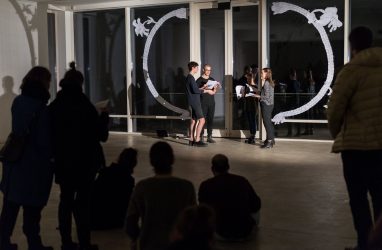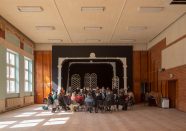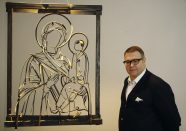 |
Newsletter |
 Hi there, As a long as someone actively seeks to be up-to-date with the current affairs, general trends and nuanced gossip, that person encounters certain buzzwords that change over time but while the buzz is in its peak, it seems to be everywhere and then it’s gone. There is, however, another type of buzz, the more latent, wandering our the edges of our public conscious (one could argue that vaporwave is still one of those despite how many times it’s been pronounced dead). One of those kind of buzzwords is decentralisation, especially in terms of cybernetic space and in more recent times, complementary currency and virtual currency like bitcoin became almost synonymous with the idea of decentralisation. In 2011, amidst the Occupy protests, economist Bernard Lietaer pointed out that economies built around monetary monopolies tend to break down and then if no clear, radical monetary reforms are put into action, political polarisation and societal tensions arise (hmm..). But what actually is decentralisation? Someone pointed it out to me that a thing can be decentralised in different ways, politically, logically and architecturally. Usually, corporations are politically centralised (one CEO), architecturally centralised (one head office) and logically centralised (can’t really split them in half). Languages are logically decentralised; the English spoken between Alice and Bob and the English spoken between Charlie and David do not need to agree at all. There is no centralised infrastructure required for a language to exist, and the rules of English grammar are not created or controlled by any one single person. Okay, lets stop for a moment. Why am I giving you all this highly specialised material? Well, decentralisation is a very peculiar concept that actually brings together the ideas of physical arrangement of space, its political implications and what are the logical interlinks into one and then can analyse them both as correlations or separations. When I came to think of it, I understood that the focus points we have put forward for the 5th edition of Rupert Alternative Education Program are tied perfectly into this. The focus we propose the participants to start off with is on discussing the current economies of the contemporary art and the aesthetic and political means we have got towards moving away or cardinally remodelling it; exploring psycho-geographies and the wavering communities of Lithuania’s regions and political and aesthetic transformations of systems of knowledge from the very broad like language itself to the very peculiar and precise. The Program remains aimed to help emerging artists develop their practise in the framework of formal and informal exchanges between them, writers, art theorists, curators, scientists, international artists, and the public. This means that the participants will be encouraged to shape-shift the program into something that suits their particular interests and needs. To find out more about the Open Call and apply, click this. As we’re on the topic of Open Calls, the time to apply for Rupert residency in Fall and Winter 2017 is running out! Oh, and please do follow us on Instagram and Facebook for the latest news and photos, busy few months ahead! 
In residence
Byzantia HarlowByzantia Harlow lives and works in London, U.K. Her practice investigates commodity, branding, the unique object, the mass produced and cultural identity. She is interested in pivoting points of value and authenticity, aspiration and desire. Byzantia has been working on a long-term project that has attempted to deconstruct and reconfigure the infrastructure of street markets, exploring the thin edge between the desired and the discarded, the valued and its detritus. At Rupert Byzantia will be researching and developing a project, (Duplicate) No one will drink the water of your well if you yourself do not drink it. Byzantia will be creating casts of objects she has encountered, working on a text and collaborating with a local dancer, to transcribe gestures observed at Vilnius markets into a rhythmic performance for a film. This project is supported by Arts Council England. 
In Residence
Lorraine ChâteauxLorraine Châteaux lives and works in Paris. She graduated in 2012 from Villa Arson National School of Art, Nice (FR). Recent exhibitions includes Le Nouveau Monde Industriel (2017), Galleria Continua, Les Moulins / Boissy-le-Châtel (FR), Culture Pop Marauders (2016), Mains d’Oeuvres, Saint Ouen (FR), Le bleu de la Nuit (2016), CCA Andratx, Andratx (Baleares, SP) ; a solo show Osmo Soft (2016) in les Ateliers, Clermont-Ferrand (FR) ; Dust: the plates of the present (2015), Camera Club of New York (US) ;Cocktail Games (2015), Le Nouveau Festival/Centre Pompidou, Paris (FR). In Rupert, she will develop one part of her project named Hosted futurism. This research aims to understand the elements and circumstances that contributed to the emergence of Futurism, which are fundamental in modernity as a challenge to the representation. 
In Residence
Cara TolmieCara Tolmie experiments from within the intersections of performance, experimental music and moving image. Her works probe the site-specific conditions of performance-making by finding ways to vocalise and place her body that access the political and poetic capabilities of physical, written and musical languages. At Rupert she will expand upon existing research and experimentation that asks questions about whose affects and languages the singing voice acts as a locus for and tests how the performing body can disrupt the flows of value that profit from this voice. |

Open Call
Deadline: 6 April Rupert Alternative Education ProgramWe are very happy to announce the 5th edition of Rupert Alternative Education Program.The 5th edition of the Alternative Education Program is curated by Adomas Narkevičius and joined by Suhail Malik, Jolanta Zabarskaitė, Hanna Kaljo, Julijonas Urbonas, Justė Jonutytė, Jonas Žakaitis and other local and international tutors yet to be announced who will host talks, workshops, public events or engage participants in free-form conversations and discussions. The rest of the Program will be created by you – the participants. Find out more. 
Open Call
Deadline: 26 March Residencies at Rupert 2017 Autumn/WinterWe are still accepting applications for Residencies at Rupert 2017 Autumn/Winter. Additionaly, there are stipends available for artists and curators from the Nordic-Baltic region who are invited to spend a part of their residency at Rupert researching, discussing and developing alternative education strategies and methods in arts together with other residents and the team. The deadline day is coming up soon now, so do not forget to fill in the application form in time. 
Talk
18 March, 5 pm Maris Vitols in ConversationRupert is pleased to invite you to attend the second event of a new talk series focusing on contemporary art and collecting. This month our programme guest is Riga-based collector, curator, entrepreneur and philosopher Maris Vitols. During this event, conversation will centre around the topics of the international art market, the context of collecting, with particular focus to the Eastern and Central European region, and of the role of collector as an active curator. For more info, please head here. |
